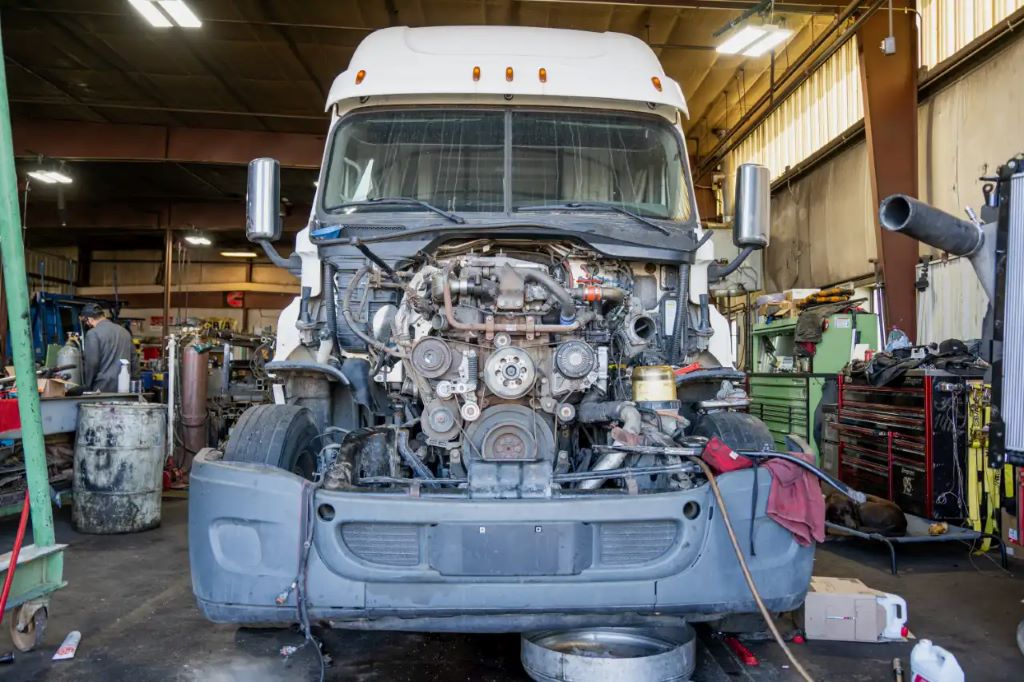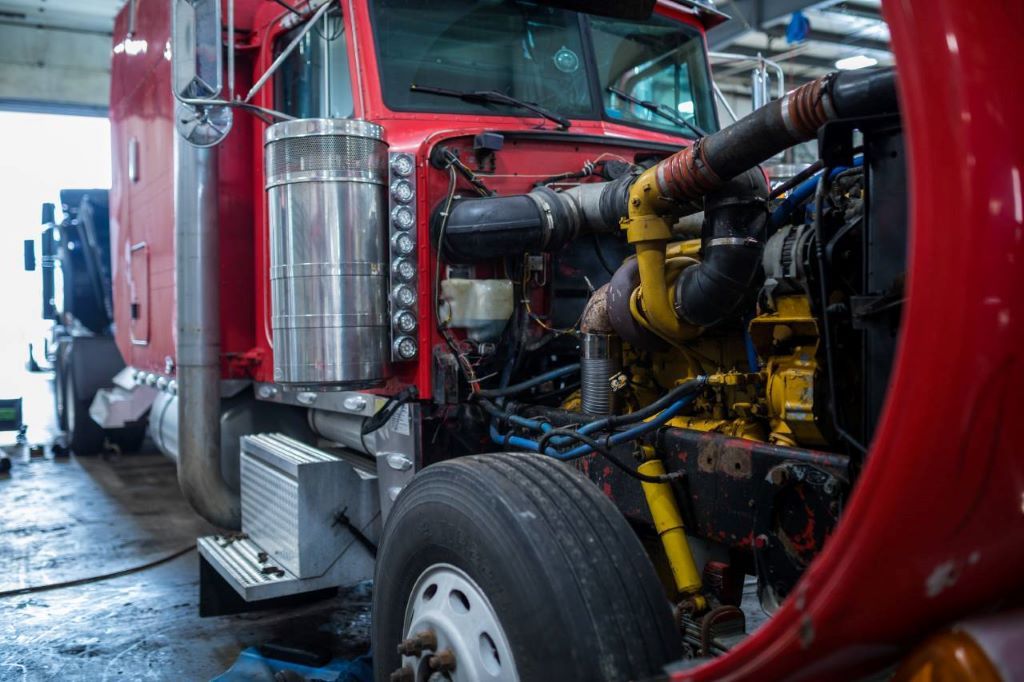
Heavy-duty trucks, the backbone of industries like construction, transportation, and agriculture, are built for a long life of demanding work. However, even the toughest machines wear down. When that happens, major repairs, overhauls, or even complete engine rebuilds might be necessary. Understanding these processes is vital for any heavy-duty truck owner or operator to ensure their vehicles stay in top condition.
What’s the Difference: Repair, Overhaul, Rebuild
While used interchangeably, these terms carry distinct meanings in the heavy-duty world:
- Repair: Addressing specific failures or malfunctions within an engine or other major components. Repairs focus on restoring a component’s function by replacing or fixing the damaged part.
- Overhaul: A more extensive process than a repair, an overhaul involves disassembling a major component, like an engine or transmission. Each part is inspected, and cleaned, and worn elements are replaced or reconditioned. The component is then reassembled, effectively extending its lifespan significantly.
- Rebuild: A comprehensive process where a component is disassembled entirely. Like with an overhaul, parts undergo a thorough inspection. Unlike overhauls, in rebuilds, almost all wearing components are replaced, regardless of their current condition. Rebuilds return components to an essentially “like-new” state.

When Do You Need Them?
Several factors might signal the need for major heavy-duty repair work:
- Excessive wear and tear: High mileage, heavy loads, and harsh operating conditions take their toll. Components inevitably wear down to a point where simple repairs aren’t enough.
- Major failures: Catastrophic malfunctions such as blown head gaskets, cracked engine blocks, or transmission failures often necessitate an overhaul or rebuild.
- Decreased performance: Noticeable declines in power, fuel efficiency, or increased emissions can point to internal engine wear, potentially requiring an overhaul or rebuild.
- Preventive maintenance: Some owners opt for scheduled overhauls or rebuilds to preempt costly failures, increase the lifespan of their trucks, and maximize uptime.
The Overhaul Process
Let’s take a closer look at the steps involved in a typical engine overhaul:
- Disassembly: The engine is removed from the truck and meticulously disassembled.
- Inspection and Cleaning: Each part is cleaned and inspected for wear, cracks, or damage.
- Machining: Components such as the cylinder block, crankshaft, and cylinder heads might need machining to restore precise dimensions and tolerances.
- Replacement and Reconditioning: New bearings, piston rings, gaskets, seals, and other wear items are installed. Some parts may be reconditioned rather than replaced.
- Reassembly: The engine is meticulously put back together following factory specifications.
- Testing and Break-In: Thorough testing verifies the overhaul’s success. A controlled break-in period follows to ensure all new components seat properly.
In-Frame vs. Out-of-Frame
Overhauls and rebuilds fall into two categories:
- In-Frame: The work is done within the truck’s chassis. This is quicker and generally less expensive, but access can be limited.
- Out-of-Frame: The engine (or other component) is completely removed from the truck, allowing for easier access and more extensive work.
Choosing the Right Option
The best choice for you will depend on:
- Severity of Issue: Minor problems might need only a repair, while extensive damage often calls for an overhaul or rebuild.
- Cost: Rebuilds are usually most expensive, overhauls less so, with repairs typically being the most affordable.
- Downtime: Out-of-frame work results in longer downtime for the truck.
Finding a Qualified Mechanic
Heavy-duty work requires specialized knowledge and tools. Choosing a reputable shop with experienced technicians is crucial. Look for certifications and expertise in the specific brands you operate.
Prevention is Key
The best way to minimize costly repairs is through proactive maintenance:
- Regular oil changes and fluid checks
- Adhering to manufacturer-recommended service intervals
- Promptly addressing minor issues before they escalate
By understanding the nuances of heavy-duty repairs, overhauls, and rebuilds, informed decisions can be made to extend the life of your trucks and protect your investment.
Keeping Your Rig Rolling: Common Transmission and Clutch Issues in Heavy-Duty Trucks
Additional Considerations
- Cost vs Benefit: A major repair can be expensive. It’s important to weigh the cost of an overhaul or rebuild against the remaining value of the truck itself. Sometimes, especially in very old trucks or those with extensive additional problems, replacement might be the more financially sound option.
- Remanufactured vs. New parts: When replacing components, you often have the option of new parts or remanufactured ones. Remanufactured components are restored to like-new condition and offer a more cost-effective solution, especially for older trucks.
Focus on Specific Components
- Engines: Delve deeper into common signs of engine trouble like excessive smoke, unusual noises, and oil leaks. These can indicate worn cylinder liners, piston rings, valves, or other vital components.
- Transmissions: Discuss slipping gears, difficulty shifting, grinding noises, or leaks as indicators of potential transmission problems which may warrant a rebuild or overhaul.
- Differentials: Explain how whining noises, clunking, or leaks from a differential point towards worn bearings, seals, or damaged gears.
Aftermarket Enhancements
- Performance Upgrades: For those seeking more power or efficiency, rebuilding an engine provides an opportunity to upgrade components like camshafts, turbochargers, or injectors. Discuss the potential benefits and the importance of ensuring compatibility between components.
Finding Information and Resources
- Manufacturer websites: Most truck manufacturers provide detailed maintenance schedules and service manuals that contain valuable information for deciding when major repairs become necessary.
- Online Forums and Communities: These are excellent resources to connect with fellow truck owners, mechanics, and enthusiasts and gain insights into specific problems, find trusted repair shops, and learn from the experiences of others.
